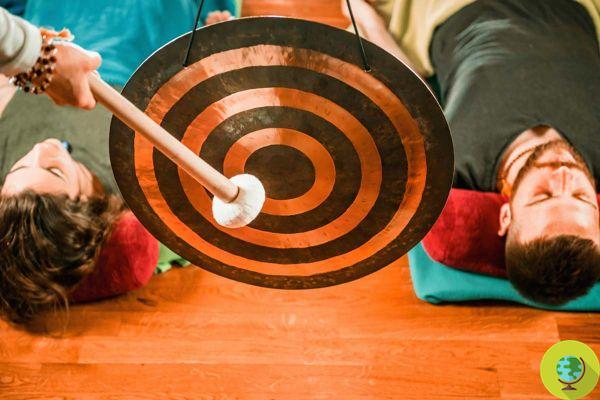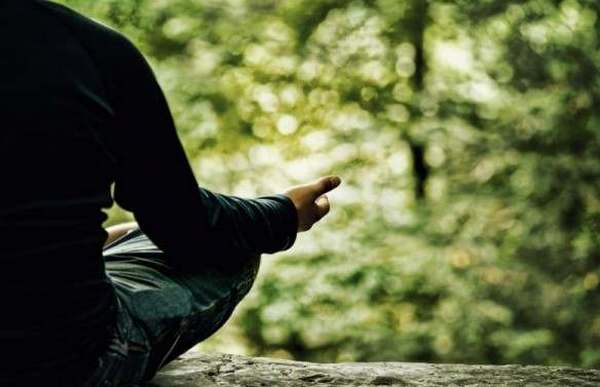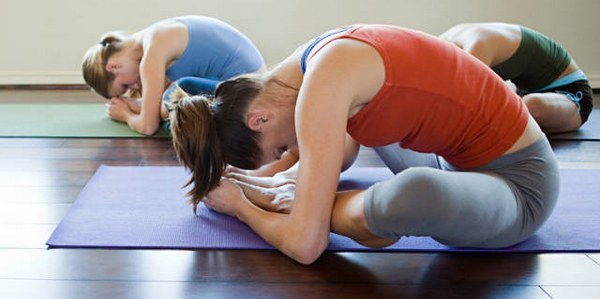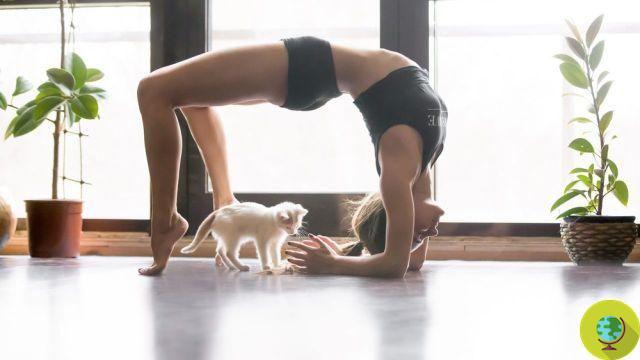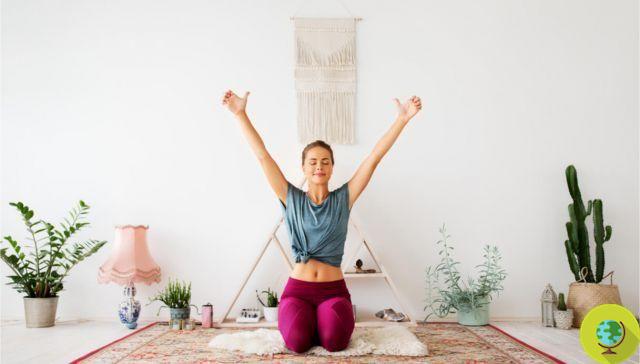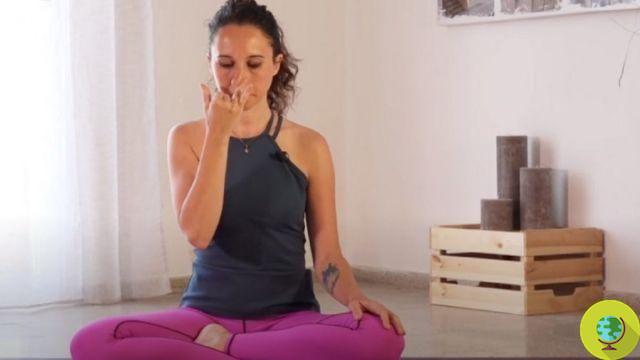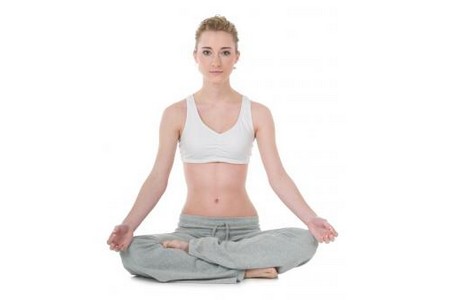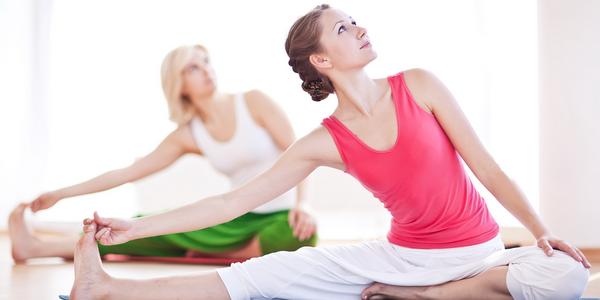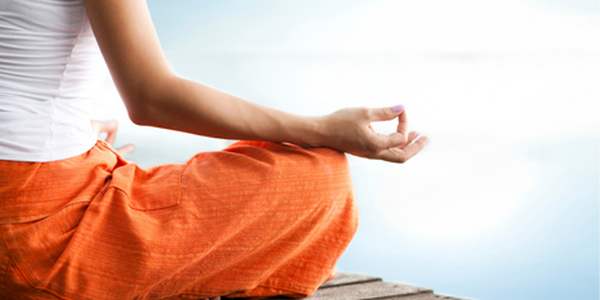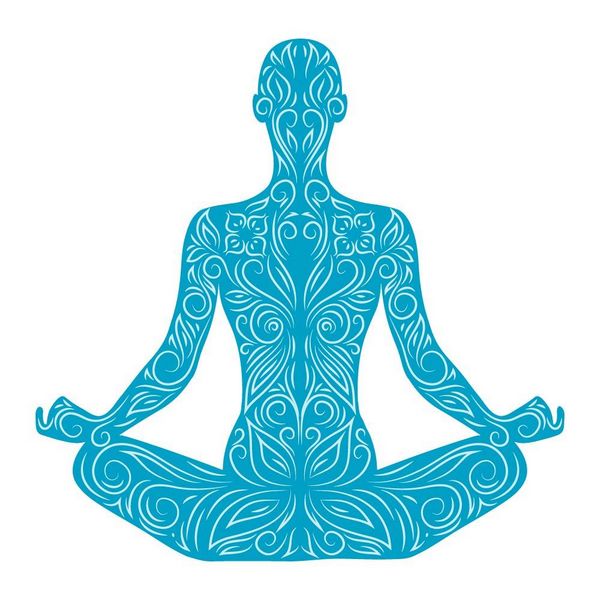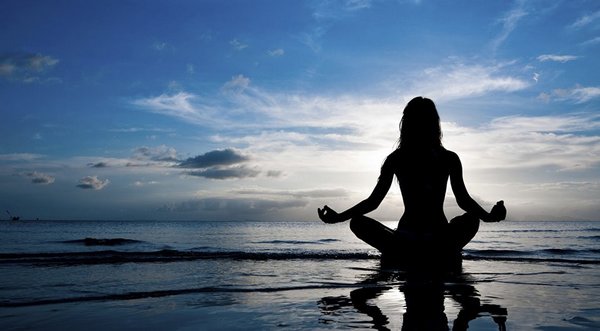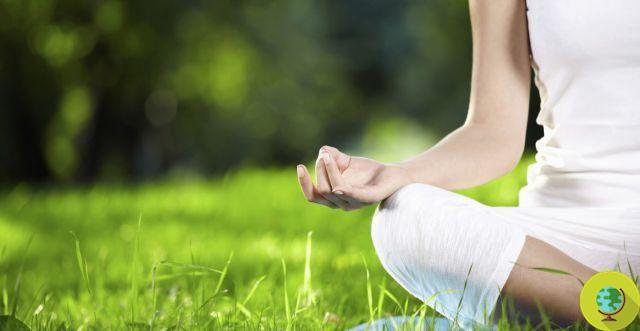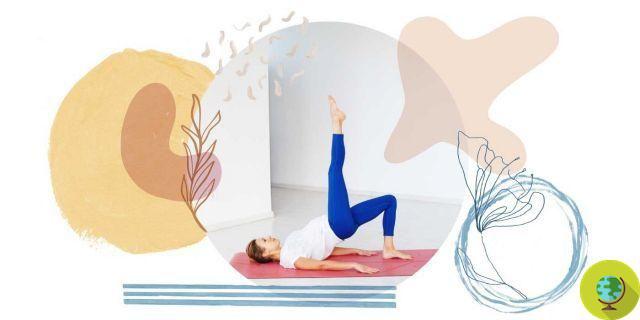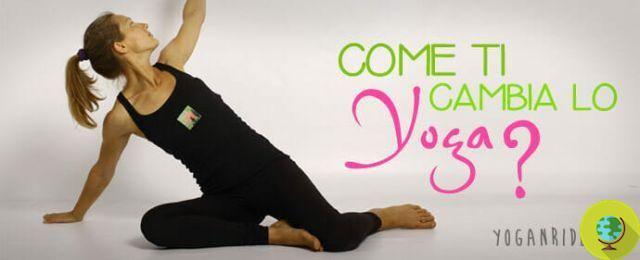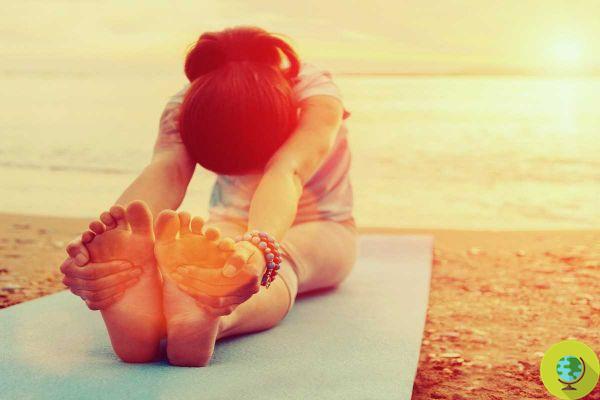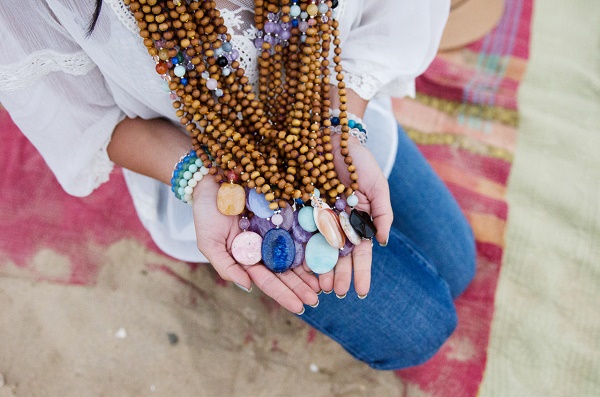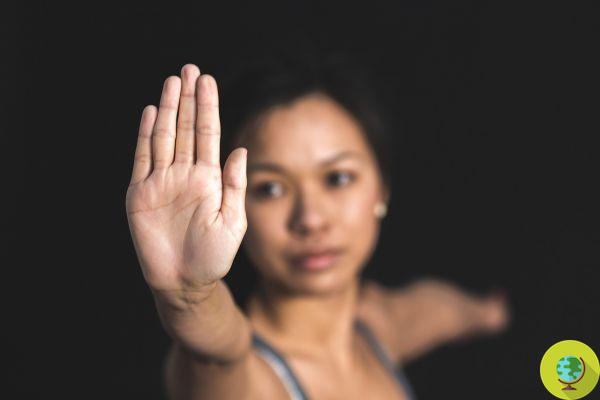The Salute to the Moon is a yoga sequence with relaxing properties for both the mind and the body. Here are the benefits and how it is performed.
Il Salute to the Moon, known in Sanskrit as Chandra Namaskara, is a series of poses performed in a particular sequence to create a continuous and relaxing flow of movement.
Like the famous Salute to the Sun, Surya Namaskara, each pose in a Moon Salutation is coordinated with the breath: inhale to extend and exhale to bend. But unlike the Greeting to the Sun, which warms and stimulates, the Greeting to the Moon cools and calms. It is used to relax the mind and draw awareness inwards. The Greeting to the Moon is useful when the energy or temperatures are high, and a quiet and peaceful presence is required.
According to yogi philosophy, they exist within our body the two different energies:
- Yan: masculine element, represents the sun and symbolizes energy and extroversion.
- Yin: female element, represents the moon, a symbol of calm and introversion.
It is important to take care of both of these energy flows; therefore, if the Sun Salutation aims to energize and reactivate the body, the Shello to the moon goes to rebalance the energy level.
Both sequences stretch and strengthen all muscle groups, increase circulation, build strong breathing, help the digestive system, strengthen the immune system, relax the mind and release physical and mental tension. (Read also: Yoga, the best way to have an iron abs: the 8 most effective asanas for a flat stomach)
Index
Salute to the Moon: what it is
The Moon Salutation is a very symmetrical and balanced flow. In fact, in the beginning you move through the first half of the sequence focusing on the right side of the body, then reach a central symmetrical pose and return to the starting position focusing on the left side of the body.
Just the repetitiveness of the sequence of movements relax your mind and body, reducing stress and anxiety.
The Moon Salutation can be included as part of a longer yoga session or performed alone; it is very suitable to do in the evening, to calm and soothe the body and prepare your mind for restful sleep.
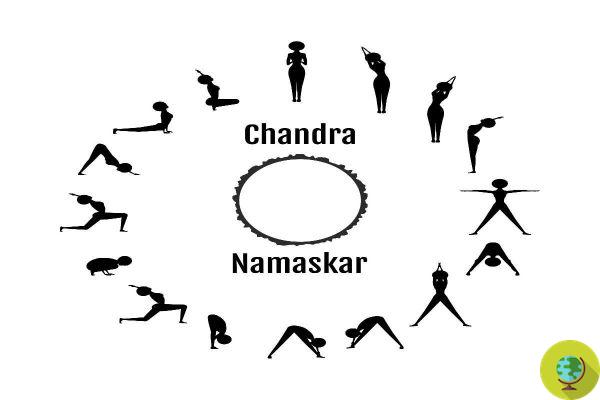
@Murchatinaart/123rf
Benefits of the Moon Salutation
The Salute to the Moon has so many benefits for the mind and body:
- Prevents insomnia
- Regulates the hormonal system in women
- Relieves Stress
- Reduces the symptoms of depression.
Being a calming sequence, is suitable for those suffering from stress as it balances energy. Especially if practiced in the evening, in those moments of transition between day and night, the mind and body draw from it positive and calming energies.
The sequence focuses mainly on the lower body, and goes to:
- stretch and strengthen all major muscle groups,
- help flexibility
- increase the functioning and balance of the respiratory systems
- positively influencing the circulatory system promotes digestion.
Furthermore, this practice has extremely positive effects on well-being of the woman. Here are the main ones:
- Tone your muscles
- Relax the nervous system
- Improve circulation
- It's good for the skin
- Regularize the menstrual cycle.
Why is this sequence related to female energy? Because in different cultures the luna is always connected with the feminine. Also, for women with the period performing the Moon Salute can give great relief especially in case of low energy. (Read also: Practicing yoga helps reduce rheumatoid arthritis symptoms, the study)
How to perform the Moon Salute
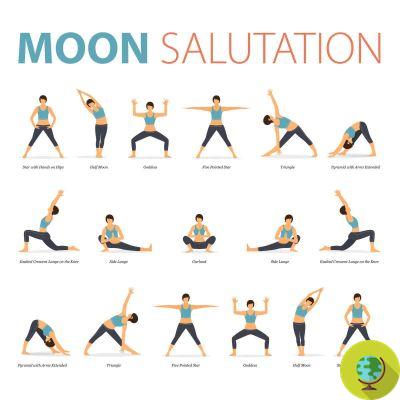
Infographic of Yoga poses for Yoga at home in concept of Yoga Moon Salutation in flat design. Woman exercising for body stretching. Set of yoga posture or asana infographic. Yoga Vector Flat Cartoon Illustration.
The Moon Salutation can be practiced within one yoga session or repeated alone in the evening.
Here's how it's done:
- Start standing in the center of the mat with the hands in prayer position on the heart, and take a few slow meditative breaths.
- Inhale, stretch your arms up. Palms together and arms that stretch. It also stretches the entire spine.
- Exhale, press on the left foot and feel the stretch across the entire left side of the body.
- Inhale again to the center and stretch your body.
- Exhale, rotate to the left, press on the right foot and feel the stretch across the entire right side of the body. She inhales and returns to the center.
- Exhale, spread your feet, bend your knees and lower your hips, stack your knees on your ankles, your thighs should always remain parallel to the ground. The coccyx is lowered, the hip bones rise. Arms in cactus position.
- Inhale, straighten the right leg and rotate the right foot forward and the left foot forms a 45 degree angle. He stretches his arms at shoulder height.
- Exhale, turn to your right and place your hand on your shin or the ground. Raise your left arm, palm facing left, look at the fingertips of the left hand.
- Inhale, rotate your hips around the front of the mat, lean forward and release your head towards the front leg, keep your legs still.
- Exhale, bend the right leg and lift the left heel, tighten the rear leg, hug the hips outside the midline, press on the feet and widen the collarbones, stretch the spine to the tip of the head, pull the breastbone forward and towards the top.
- Inhale, place your left knee on the ground, hug your hips outside the midline, stretch your arm upward with your palms pressed together. Draw the navel towards the spine, widen the collarbones, lengthen the column to the tip of the crown.
- Exhale, place both hands on the ground on the inside of your right leg and rotate your hips to the side of the mat. Press on both feet, keep your right knee over your right ankle.
- Inhale, bend both knees and seat your hips in one deep squat. Press your elbows against your thighs, hug your outer hips in the midline, let your pelvis get heavy towards the back of your heels. Widen the collarbones, lengthen the spine to the tip of the crown.
- Inhale as you straighten your legs. He turns his toes forward and puts his left foot next to his right. At the same time, spread your arms to the side and above your head. He intertwines his fingers and points his index fingers at the ceiling. Exhale as you press your left hip to the side and bend your upper torso to the right. Keep your feet on the ground and your thighs firmly engaged. Inhale and return to center. Exhale as you lean to the left, then inhale to return to center. Exhale as you release your arms.
- Merge i palms of hands in prayer position. She places her thumbs on her breastbone and takes several breaths.
- Follow your Telegram|Instagram | Facebook | TikTok |Youtube
Could it be interesting for you:
- 10 things to do in the morning to stay fit and healthy
- 10 reasons to practice yoga (including sex)
- Yoga: this is how it transforms body and mind from the first lesson onwards
- Yoga and meditation in nature: all the benefits of practicing surrounded by greenery
- Find physical shape and well-being thanks to yoga and nutrition, even if you have little time
- Yoga: this is how it transforms body and mind from the first lesson onwards




